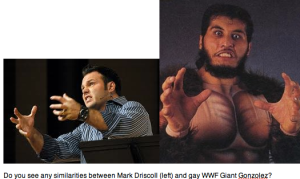What if YOU lived on the coolest street in America?
Ada Calhoun writes for the New York Times, (and has written for O magazine, The New Republican, The Atlantic, and Cosmopolitan, among others). She grew up as the daughter of 1960s Bohemians who came to live in the East Village during the Bob Dylan era.
Maybe the most ubiquitous thing about the most famous (and infamous) hip section of New York City is how commonly people declare that it’s not as cool as it was before. And strangely, there’s a 100 year- history of just that thing.
Calhoun researched the 400 year history of New York in the St Marks area and she has written a fascinating book called St Marks is Dead which is an excellent commentary on the idea of “cool” as well as a glimpse into one of the most culturally powerful streets in the U.S.
Podcast: Play in new window | Download (Duration: 43:08 — 59.3MB) | Embed
Subscribe to Spark My Muse Apple Podcasts | Spotify | Email | TuneIn | RSS | Subscribe to Spark My Muse

Her book “St Marks is Dead” can be found here.
A peek at The East Village
SHOWNOTES:
MIN 1:00
The background for her article that went viral “The Wedding Toast I’ll never Give”
1:30
Realism for love and marriage.
2:30
The “and yet” philosophy of paradox in life and love.
3:00
The big flight fight.
4:00
Ada’s mother says, “The way you stay married is you don’t get divorced.”
5:00
The marriage “toolbox” for staying together only had a bent screwdriver and tweezers.
6:30
How her parents’ marriage defied the odds.
6:50
Thinking of a spouse as “family”.
8:00
Thinking of marriage, not as a dating phase, but as becoming family.
9:00
There’s going to be joy and pain both.
11:30
Ada’s parenting book about how you should ignore all the parenting books and look at your kid and figure out who they are, instead of worrying about being the perfect parent:
“Instinctive Parenting: Trusting Ourselves to Raise Good Kids”
12:00
On growing up as the child of 1960’s Bohemians of the Bob Dylan era in New York City’s East Village in the St Mark’s Place neighborhood and being one of the only kids in the neighborhood during a time when it was not child-friendly. (Many fires, the AIDS epidemic hit the area hard, drugs, junkies, homelessness and tent cities, prostitution were all nearby).
18:00
Working at the Austin Chronicle
19:00
On being a journalist in New York City
On her new book “St Marks is Dead: The Many Lives of America’s Hippest Street”
20:30 High rent, and neighborhood changes to St Marks Place cause people to wish for the way it was. They feel betrayed.
Ada researched and found that each generation had the same experience throughout the last century.
21:30
Malcolm Cowley: “Bohemia is always yesterday.”
22:00
What St Marks Place is like in 2015.
23:30
(Lisa) My first experience in New York City.
24:30
Complaining is the one constant in NYC neighborhoods.
25:30
Hippy boom, punk era, DIY art scene, then the GAP moved in in the late 1980s, then the tv show Kids era, then the Bloomsburg era.
26:30
Answering: Where in Manhattan is the artistic cultural hot spot now?
27:30
once a franchise moves in….
29:00
The franchises that opened and then closed in the East Village.
31:00
Places she recommends on St Marks Place. 3rd Avenue to Avenue A: 3 blocks that ends at Thomkins Square Park.
33:30
The median apartment costs more than a million dollars.
36:00
Neil Patrick Harris in Harlem and the upswing of that area.
37:00
Music, and art and going outside can happen in NYC public schools now.
39:00
What was St Marks Place like 400 years ago?
39:30
St Marks Place, the church, is the oldest place of continuous worship in New York City.
40:00
About the racial tension and the hippy priest in 1969, named Michael Allen who was kicked out of St Marks Place.







